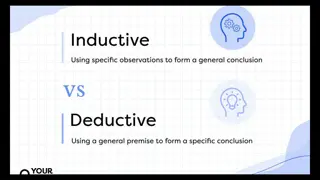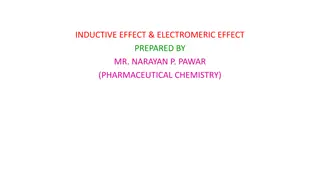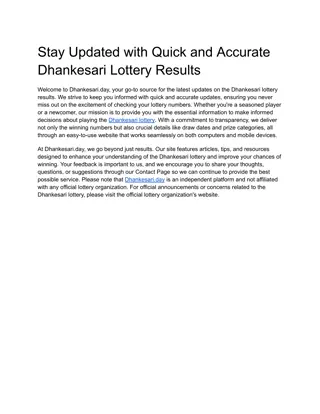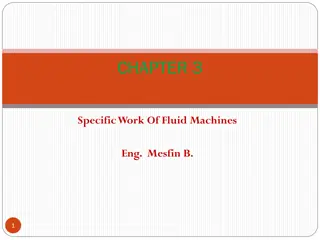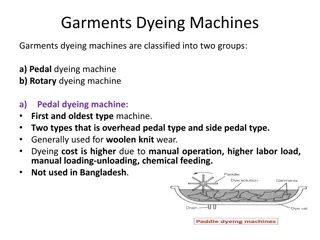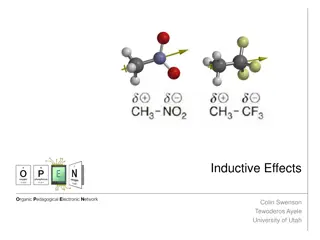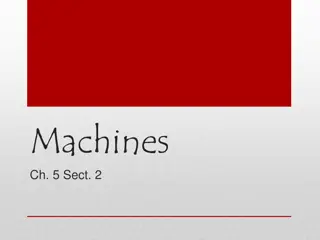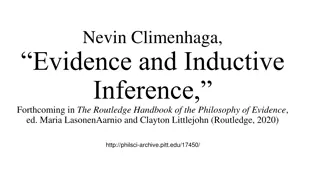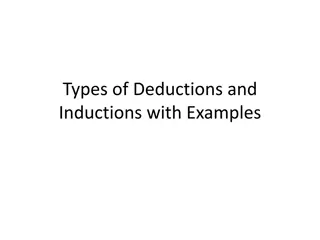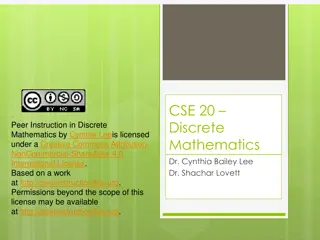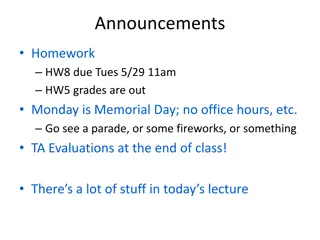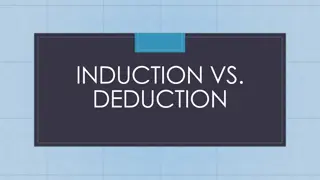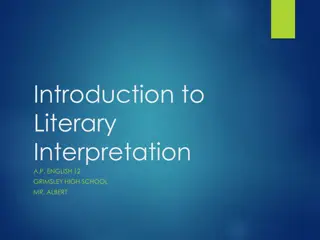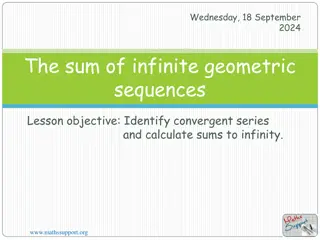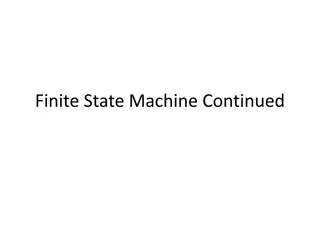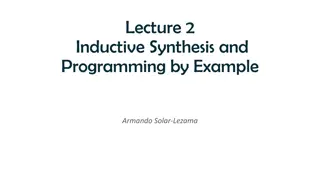Infinite Lottery Machines: An Inductive Approach
An in-depth exploration of the Material Theory of Induction applied to infinite lottery machines, discussing the challenges and strategies for making inductive inferences in such scenarios. The analysis covers probabilistic considerations, countable additivity issues, equal probability of outcomes, and label independence, shedding light on the complexities of inductive reasoning in infinite settings.
Download Presentation

Please find below an Image/Link to download the presentation.
The content on the website is provided AS IS for your information and personal use only. It may not be sold, licensed, or shared on other websites without obtaining consent from the author.If you encounter any issues during the download, it is possible that the publisher has removed the file from their server.
You are allowed to download the files provided on this website for personal or commercial use, subject to the condition that they are used lawfully. All files are the property of their respective owners.
The content on the website is provided AS IS for your information and personal use only. It may not be sold, licensed, or shared on other websites without obtaining consent from the author.
E N D
Presentation Transcript
An Inductive Calculus for Infinite Lottery Machines John D. Norton Department of History and Philosophy of Science University of Pittsburgh Based on Infinite Lottery Machines in The Material Theory of Induction. Draft at http://www.pitt.edu/~jdnorton/homepage/cv.html#mater ial_theory 1
Material Theory of Induction The inductive inferences appropriate to some domain are warranted by fact of the domain. In a sufficiently regular domain, There may be a calculus of induction peculiar to it. There is no universal calculus of inductive inference. Now.. Illustration of a non-probabilistic calculus in the domain of an infinite lottery. 2
An infinite lottery machine Fair selection made among infinitely many balls 1, 2, 3, = without favor to any number or numbers. 3
Problems in inductive inference To what extend should we expect: Some specific number to be drawn? 27? 3,668? Some set of numbers? Odd numbers? Even numbers? Numbers greater than 100?... Outcomes on repeated trials? 100 trials, all with numbers greater than 100? 4
Probabilistic Analysis Probability P(n) of outcome n must satisfy: 1 2 Fairness of selection = P(1) = P(2) = P(3) = . = P(1) + P(2) + P(3)+ = 0 + 0 + 0 + = 0 Normalization P(1) + P(2) + P(3)+ = 1 P(1) + P(2) + P(3)+ = + + + = Contradiction 5
Escapes Drop countable additivity. Finite additivity only. Infinitesimal probabilities P(1) = 0 P(1) + P(2) = 0 P(1) + P(2) + P(3) = 0 ... = P(1) = P(2) = P(3) = . where any positive real number ( ) 0 < < CANNOT take infinite limit. So we can posit independently: P(1) + P(2) + P(3) + = 1 P(even) = P({2, 4, 6, ...}) = ... Both preserve finite additivity. My claim: finite additivity must go! 6
Choosing without favor each outcome has equal probability. Probability may not be well-defined. Label independence All true statements pertinent to the chances of different outcomes remain true when the labels are arbitrarily permuted. 1 or 2 arise roughly as often as 3 or 4. 1 or 2 arise roughly as often as 3 or 4. 1 or 2 arise roughly as often as 3 or 4. 7
An infinite lottery machine Permuting the labels on the balls has no effect on the chances of the outcomes. Chance is now generalized beyond probability. A general, as yet unspecified, measure of indefiniteness. 8
Odd and even Chance [Even] = Chance [Odd] 9
Co-infinite Infinite Sets All co-infinite infinite sets have the same chance. 10
No probability measure captures these properties of chance no powers of 10 ? ? ? 10, 100, 1000, P( ) = P( ) = P( ) = P( ) 10000, 1, 2, 3, 4, 5, 6,7, 8, 9, 11, 12, odd even Finite additivity fails. 11
Outcome sets equivalent under label independence finiten:finite set with n members n = 1, 2, 3, e.g. Members of finite3 are {1, 2, 3}, {27, 5, 134}, infiniteco-infinite:infinite set whose complement is also infinite e.g. even numbers, odd numbers, prime numbers, powers of ten, infiniteco-finite:infinite set whose complement is finite of size n n = 1, 2, 3, e.g. complements of finite3, all numbers greater than ten, 12
Equivalent sets have equivalent chances Ch(finiten) = Vn Ch(empty-set) n = 1, 2, 3, = V0 certainly not Ch(infiniteco-infinite) = V Ch(all-outcomes) = V-0 certain as likely as not Ch(infiniteco-finite-n) = V-n n= 1, 2, 3, V V V V 10, 100, 1000, Ch( ) = Ch( ) = Ch( ) = Ch( ) 10000, 1, 2, 3, 4, 5,6,7, 8, 9, 11, 12, odd even no powers of 10 13
But what does the chance function Ch(.) mean? NOT: give an explicit definition. NOT: subjective Bayesian elicitation The probabilists approach: Contrive circumstances in which an assertion of probability is re-expressed as an assertion of very high or very low probability. Coin toss: P(H=heads) = 0.5 In very many independent coin tosses,with probability near one, there will be roughly one half H. Connect with non- probabilistic expectations, else all we do is relate probabilities to probabilities, without giving them independent meaning. Rule of coordination: Very low probability outcomes generally do not happen; and very high probability outcomes generally do. 14
Chance Ch(.) informally Unlikely: succeeds in only finitely many cases. Ch(finiten) = Vn n = 1, 2, 3, Intermediate chances all the same; easier than probabilistic case. Ch(infiniteco-infinite) = V as likely as not Ch(infiniteco-finite-n) = V-n Likely: fails in only finitely many cases. n= 1, 2, 3, Rule of coordination: Very low chance outcomes Vn generally do not happen; and very high chance outcomes V-n generally do. 15
Chance of a number less than or equal to N? Chance is VN Does not happen Chance is V-N Does happen no matter how big N is! 16
1000 independent drawings All 1000 numbers are less than or equal to N. All 1000 numbers are the same Chance is VN1000 Does not happen Chance is V as likely as not 17
Frequency of even in N drawing V V V Chance (0 even in N draws) = Chance (1 even in N draws) = Chance (2 even in N draws) = Chance (N/2 even in N draws) = Chance (N-1 even in N draws) = Chance (N even in N draws) Otherwise might we end up with frequencies that authorize an additive probability measure? V V V = 18
Measure problem in cosmology In an eternally inflating universe, unlike unlike unlike infinitely many patches like our local universe like like like and infinitely many unlike our local universe. like unlike unlike like 19
Guth, Steinhardt: no probabilities Steinhardt (2011, p. 42) Guth (2007, p. 11) As an analogy, suppose you have a sack containing a known finite number of quarters and pennies. For an infinite collection of coins, there are an infinite number of ways of sorting that produce an infinite range of probabilities. So there is no legitimate way to judge which coin is more likely. By the same reasoning, there is no way to judge which kind of island is more likely in an eternally inflating universe. define probabilities in an eternally inflating spacetime, one discovers ambiguities. The problem is that the sample space is infinite, in that an eternally inflating universe produces an infinite number of pocket universes. The fraction of universes with any particular property is therefore equal to infinity divided by infinity a meaningless ratio. However, as soon as one attempts to 20
Benchmarking with a randomizer The probability that your unborn child will be a girl is 0.5. The chance that eternal inflation spawns a patch likeours is as likely as not. The probability is the same as tossing a head in a fair coin toss. The chance is the same as drawing an even number in an infinite lottery. 21
Are infinite lottery machines physically possible? September 13, 14; October 21, 27, December 13, 2016; February 14, 2017. How? to? Built? an? Infinite? Lottery? Machine? John D. Norton1 Department of History and Philosophy of Science University of Pittsburgh http://www.pitt.edu/~jdnorton An infinite lottery machine is used as a foil for testing the reach of inductive inference, since inferences concerning it require novel extensions of probability. Its use is defensible if there is some sense in which the lottery is physically possible, even if exotic physics is needed. I argue that exotic physics is needed and describe several proposals that fail and at least one that succeeds well enough. 1.? Introduction? An infinite lottery machine, as I shall construe it here, chooses from a countable infinity of outcomes n = 1, 2, 3, without favoring any outcome. The machine is immediately problematic if one applies routine probabilistic notions to it. If P(n) is the probability of outcome n, then the probability that one of the outcomes is realized is given by the infinite sum: P(1) + P(2) + + P(n) + = 1 ( 1) It must equal one, as shown, since one of the outcomes 1, 2, 3, is sure to happen. However each individual outcome must have the same probability e = P(1) = P(2) = =P(n) = ( 2) If e>0, then the infinite sum of probabilities in (1) is infinite, contradicting the axiom of probability theory that the probability of the whole event space is unity. If however we set e=0, then the same sum yields zero. 1 I thank John Earman, Casper Storm Hansen, Bryan Roberts, David Snoke, Teddy Seidenfeld and Porter Williams for helpful discussion. 1 22


